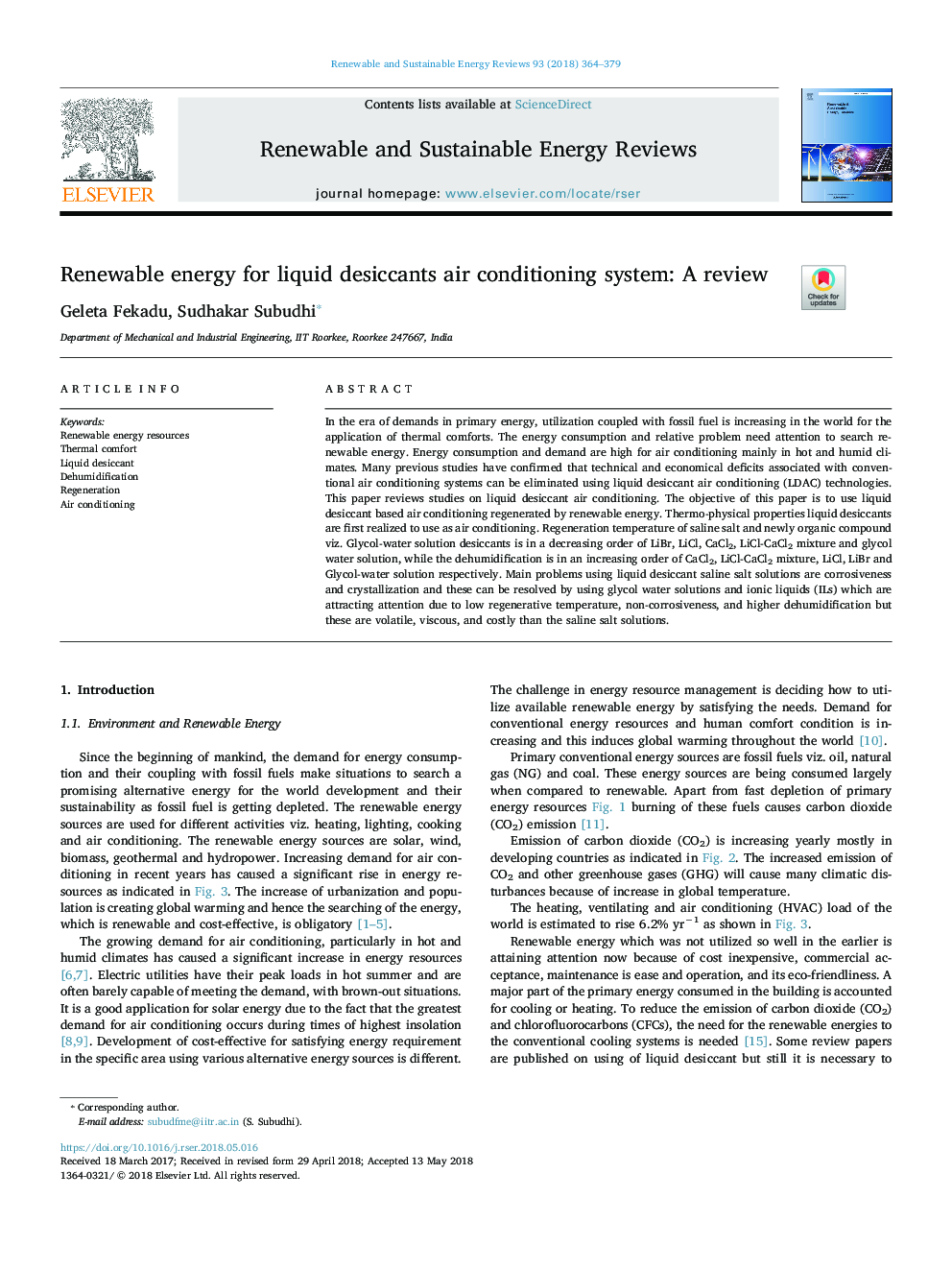| Article ID | Journal | Published Year | Pages | File Type |
|---|---|---|---|---|
| 8110719 | Renewable and Sustainable Energy Reviews | 2018 | 16 Pages |
Abstract
In the era of demands in primary energy, utilization coupled with fossil fuel is increasing in the world for the application of thermal comforts. The energy consumption and relative problem need attention to search renewable energy. Energy consumption and demand are high for air conditioning mainly in hot and humid climates. Many previous studies have confirmed that technical and economical deficits associated with conventional air conditioning systems can be eliminated using liquid desiccant air conditioning (LDAC) technologies. This paper reviews studies on liquid desiccant air conditioning. The objective of this paper is to use liquid desiccant based air conditioning regenerated by renewable energy. Thermo-physical properties liquid desiccants are first realized to use as air conditioning. Regeneration temperature of saline salt and newly organic compound viz. Glycol-water solution desiccants is in a decreasing order of LiBr, LiCl, CaCl2, LiCl-CaCl2 mixture and glycol water solution, while the dehumidification is in an increasing order of CaCl2, LiCl-CaCl2 mixture, LiCl, LiBr and Glycol-water solution respectively. Main problems using liquid desiccant saline salt solutions are corrosiveness and crystallization and these can be resolved by using glycol water solutions and ionic liquids (ILs) which are attracting attention due to low regenerative temperature, non-corrosiveness, and higher dehumidification but these are volatile, viscous, and costly than the saline salt solutions.
Keywords
Related Topics
Physical Sciences and Engineering
Energy
Renewable Energy, Sustainability and the Environment
Authors
Geleta Fekadu, Sudhakar Subudhi,
